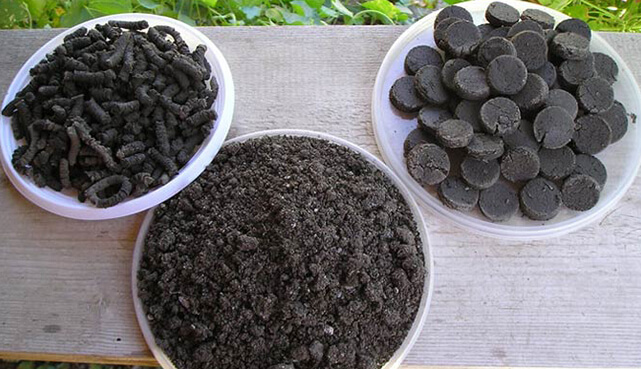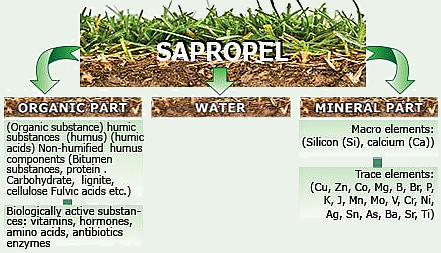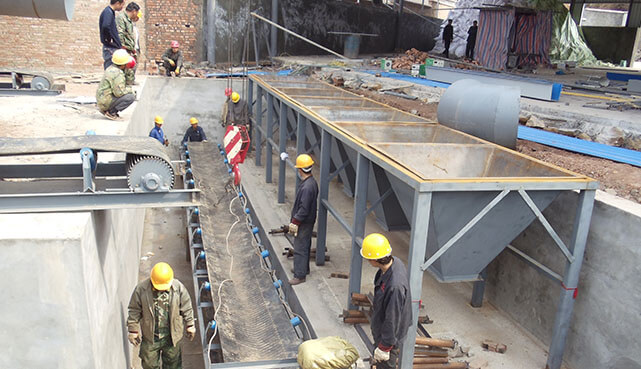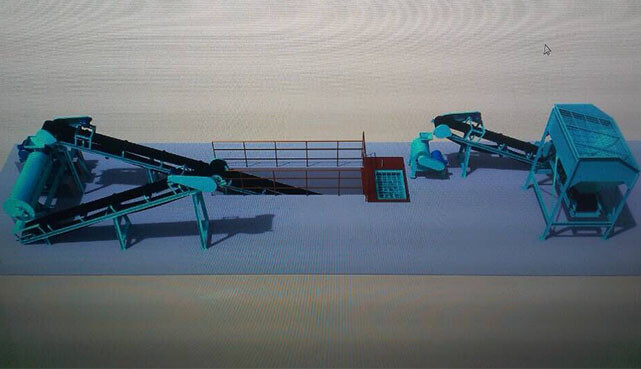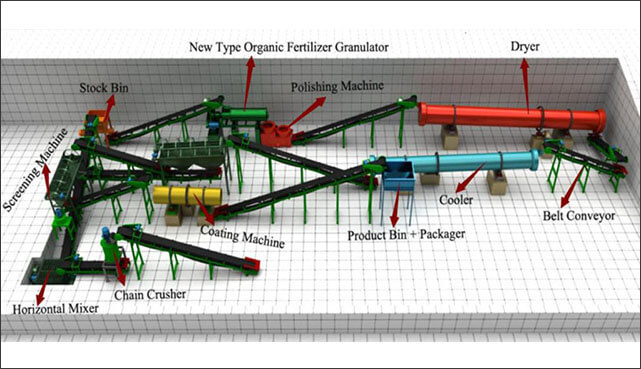As for organic farming and organic food development, they are related to organic matters and natural resources. Therefore, bio organic fertilizer is necessary and important for the development. As is known to all, common organic fertilizer has many types, e.g., green manure, animal manure, compost, etc. Sapropel-peat organic fertilizer is with a high potential in organic farming. Because of little information for sapropel-peat fertilizer, people know little about this bio organic fertilizer. Now, let us make detailed analysis of sapropel-peat fertilizer.
Sapropel is sediment rich in organic matters, which is formed on the bottom of fresh water. It is in form of colloid structure and developed during thousands of years. According to some measures, sapropel is increased 1-2mm every year. Sapropel is the cleanest material because it is not contaminated with heavy metals and radionuclides. Mediterranean and Black Sea sapropels are the most typical areas.
Sapropel can be used for fertilizers for promoting soil amendment. The benefits of using sapropel as fertilizer are as followings. Firstly, it can increase soil organic matter content. Secondly, it accelerates microbiological activity. Thirdly, it increases some mineral nutrients content for plant growth stimulation.
Composition analysis of micro and macro substances in sapropel
|
Parameter
|
Unit
|
Value
|
Parameter
|
Unit
|
Value
|
|
Organic matter |
%
|
73.3 ± 0.9 |
Fe
|
mg/kg
|
7745 ± 775 |
|
Total P(P2O5) |
%
|
0.15 ± 0.02 |
Hg
|
mg/kg
|
0.30 ± 0.04 |
|
Total N |
%
|
2.8 ± 0.3 |
Cr
|
mg/kg
|
23 ± 2 |
|
K
|
%
|
0.22 ± 0.01 |
Cd
|
mg/kg
|
1.1 ± 0.1 |
|
As
|
mg/kg
|
0.73 ± 0.07 |
Ni
|
mg/kg
|
18 ± 1 |
Note: Contents are given on a fresh mass basis of sapropel
What is peat?
 As Wikipedia saying, peat is an accumulation of partially decayed vegetation or organic matter that is unique to natural areas called peatlands, bogs, or mires. It has different structure like decomposed remains and colloidal mass. In a natural state, peat shows as bulk and water content is generally 80 to 90%. The proportion of peat is generally 1.20 to 1.60. According to the different degree of decomposition of plant residues and soft deposits, it accounts for more than 30% organic matter content. Peat, in a lower degree of decomposition, is light brown and sandy beige. While decomposed peat contains a lot of plant residues, it is dark brown, black and hard. This kind of peat contains much humic acid and it is not easy to identify plant residues.
As Wikipedia saying, peat is an accumulation of partially decayed vegetation or organic matter that is unique to natural areas called peatlands, bogs, or mires. It has different structure like decomposed remains and colloidal mass. In a natural state, peat shows as bulk and water content is generally 80 to 90%. The proportion of peat is generally 1.20 to 1.60. According to the different degree of decomposition of plant residues and soft deposits, it accounts for more than 30% organic matter content. Peat, in a lower degree of decomposition, is light brown and sandy beige. While decomposed peat contains a lot of plant residues, it is dark brown, black and hard. This kind of peat contains much humic acid and it is not easy to identify plant residues.Why Using Sapropel-peat to Produce Bio Organic Fertilizer?
Because of high content of mineral materials, sapropel is suitable for soil amendment and plant growth stimulation, which increases humus, nitrogen and other trace elements. Sapropel fertilizer, as one of organic fertilizers, contains biological materials. Through certain treatment, sapropel has much effect on improvement of soil condition. As for peat, it is widely used in agriculture. Due to high content of humic acid and organic matters, peat is good for soil improvement and plant growth. Some microelements, like Cu, Zn, B, Mn, participate formation of substances and growth and reproduction of plants. Therefore, to produce bio organic fertilizer is reasonable for fertilizer manufacturers. And then it promotes elements transformation and better absorption of nutrients.
There is usually low mineral content in sapropel, which has a range from 10% to 75%. As we all know, organic fertilizer can provide different elements for plant growth stimulation. Thus, high content of humic materials in sapropel and peat is beneficial. Sapropel-peat fertilizer has been developed by some companies. SAPRO Agro and SAPRO Elixir fertilizer has been brands for sapropel fertilizer. As experiments shown, plants using the above fertilizer increase capacity by 9-16%.
How to Make Sapropel-peat Bio Organic Fertilizer?
Due to colloidal structure, sapropel has high moisture content, which is about 85% after extraction. As we all know, the most suitable water content is 50-60%, so the first step for sapropel treatment is to reduce water content. Adopt natural drying method to make sapropel dry. If the moisture is too high, you can use solids and liquid separator for material separation. Because dry sapropel and peat is very hard, you can crush the material before compost. And then the organic raw materials can be in the whole bio organic fertilizer production process. In general, sapropel-peat fertilizer production process is as follows.
Solid-liquid seperation→material crushing→composting(hydraulic compost turner) →fertilizer mixing→fertilizer granulation process(new type organic fertilizer granulator) →fertilizer drying and cooling→fertilizer screening→fertilizer packaging (See more bio organic fertilizer production process )
Advantages of Sapropel and Peat Based Organic Fertilizer
 1. Rising soil organic matter While applying saproperl-peat bio organic fertilizer, soil amendment is shown in formation of soil crumbled structure, increasing soil replacement capacity and cushioning performance. In addition, it keeps water and reduces damage. This kind of fertilizer makes soil color dark in order to be beneficial to absorb energy.
1. Rising soil organic matter While applying saproperl-peat bio organic fertilizer, soil amendment is shown in formation of soil crumbled structure, increasing soil replacement capacity and cushioning performance. In addition, it keeps water and reduces damage. This kind of fertilizer makes soil color dark in order to be beneficial to absorb energy.2. Stimulation of microbiological activity
Balance in soil system provides great condition for microorganisms and makes them boom. In the meanwhile, probiotic decomposes a lot of organic matters in soil. After interaction with air, soil and water, other organic matters are produced. Thus, organic material contents increase.
3. Providing nutrients for plants
Sapropel and peat provides nutrients for a long time. It contains many microelements, like N, H, C, S, O, P, etc. These microelements are necessary for plants. It can be absorbed by roots, leaves and stems. Thus it increases soil available nutrients, improves plants nutrient condition and reduce nutrient loss. After applying certain amount of sapropel-peat fertilizer to soil, you will not need to add any other organic fertilizer for 4-5 years.
Releated reading:
1. How Does Fertilizer Affect Plants Grow?
2. What are the benefits of organics granulation

